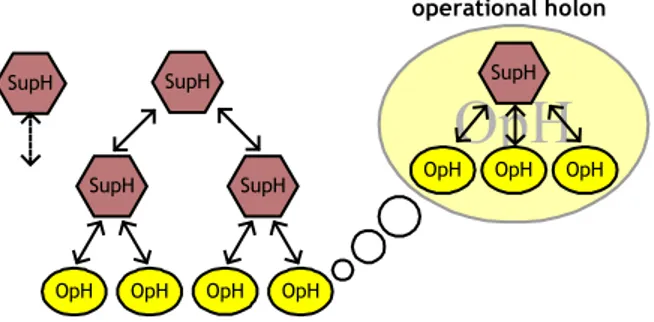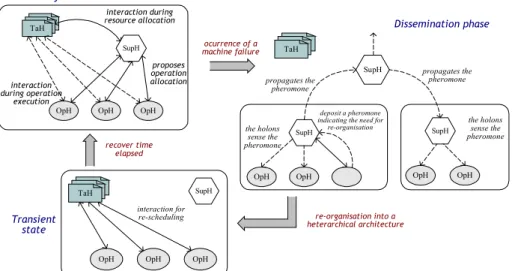Towards Autonomy, Self-Organisation and Learning in Holonic Manufacturing
Texto
Imagem




Documentos relacionados
Other example is the ADACOR (ADAptive holonic COntrol aRchitecture for distributed manufacturing systems) architecture [5], that proposes an adaptive production control system
ADACOR Adaptive Holonic Control Architecture for Distributed Manufacturing
− A part cannot be started until its preceding part(s) is finished. − An operation cannot be started until its preceding operations are finished. − Each machine can only process
This paper proposes an integration process that allows the integration of automation resources independently from the holonic control application, using some concepts derived from
Having this in mind, ADACOR holonic manufacturing control architecture [3] proposed an approach based on the use of standard interfaces, using the service- oriented
The rest of the paper is organized as follows: Section 2 makes a brief description of the ADACOR 2 self-organized holonic multi-agent system architecture while Section 3 describes
This paper presents a switching mechanism framework in dynamic hybrid control architectures, which exploits the advantages of hierarchical manufacturing scheduling systems
The self-organization model that implements the switching between the stationary and transient states is supported by local driving forces, namely the autonomy factor and the
